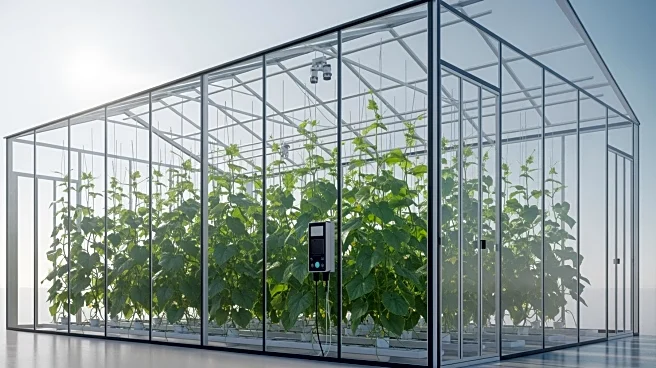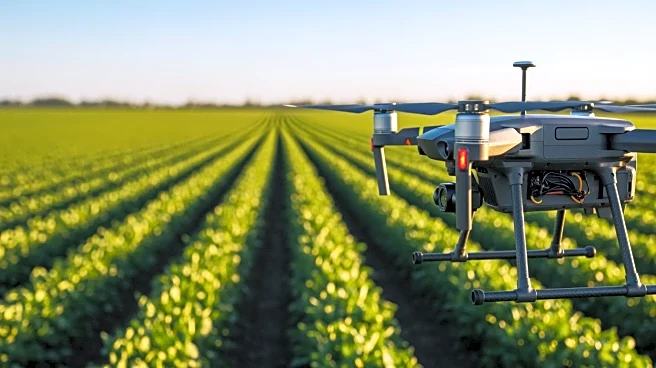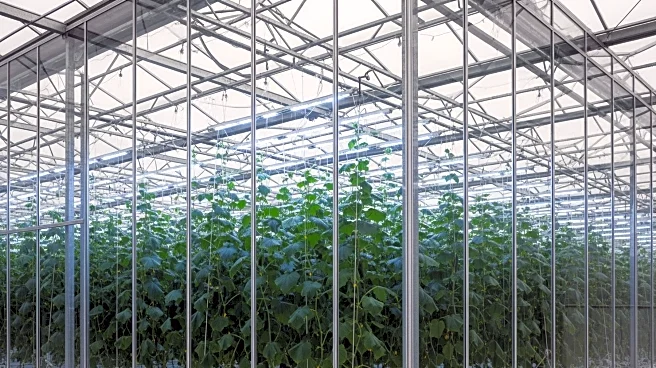What's Happening?
The Netherlands has become a leader in cucumber cultivation through the use of high-tech greenhouses. These greenhouses employ advanced techniques such as high-wire mesh, biofiber substrates, LED lighting,
and automated harvesting systems. This approach allows for continuous production and high yields, even during harsh winter conditions. The Netherlands' agricultural model focuses on maximizing productivity and quality through controlled environments, reducing reliance on traditional soil and climate conditions. This innovative system supports large-scale cucumber production, contributing to the country's reputation as an agricultural powerhouse.
Why It's Important?
The Netherlands' success in cucumber cultivation demonstrates the potential of technology-driven agriculture to overcome environmental limitations. By optimizing growing conditions, Dutch farmers can achieve consistent yields and quality, which is crucial for meeting global food demands. This model serves as an example for other countries looking to enhance their agricultural productivity and sustainability. The use of technology in agriculture can also reduce waste and improve resource efficiency, addressing key challenges in food production and environmental conservation.
Beyond the Headlines
The intensive use of technology in agriculture raises questions about energy consumption and the need for skilled labor. While the Netherlands' model is effective, it may not be easily replicable in regions with different economic or environmental conditions. The reliance on complex systems also highlights the importance of balancing technological advancements with sustainable practices. As global demand for food increases, countries may need to consider the ethical and environmental implications of high-tech agriculture.














